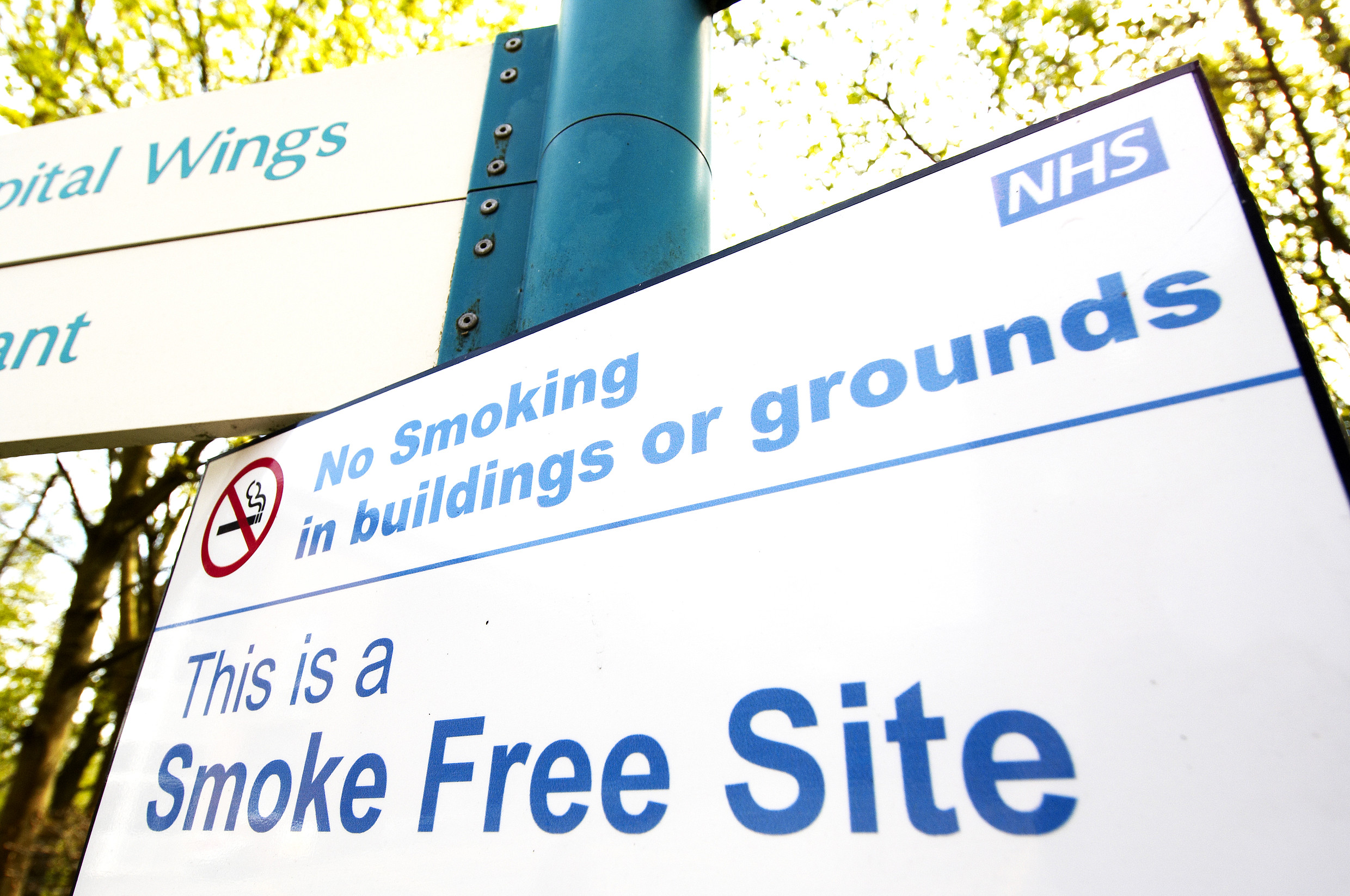
At any one time up to 7,000 people in England are in a secure mental health unit. The units provide care and treatment to people during an incredibly difficult period of their life and should offer an environment of support, helping people in bettering both their mental and physical health.
One of the biggest harms to the physical health of people living with a mental illness comes from smoking; around a third smoke and on average smoke significantly more. In fact, a joint survey by Public Health England and NHS England found the prevalence of smoking in secure mental health units was even higher – 64% of patients smoked, compared to 18% in the population as a whole. Life expectancy amongst people with serious mental illness is considerably lower – often 15-20 years - and much of this is attributable to the harms caused by smoking.
In 2013, NICE published guidance which recommended that all mental health units make their buildings and grounds completely smokefree, yet a survey in July 2014 found that only 9% of units have such a policy.
Although the majority of units are smokefree inside buildings, they allow smoking in the grounds and outdoor areas.
While not breaking the UK’s smokefree laws, this is contrary to NICE guidance and works to exacerbate the significant health inequalities faced by this group. Turning this around is a key priority for PHE in the coming years, as set out in From Evidence Into Action, and so today we have published joint guidance with NHS England to encourage and support units to best implement NICE guidance and go smokefree.
So why did our survey find so few units with a completely smokefree policy?
Concerns that stopping smoking can have a negative impact on psychotropic medication, as well as stress and anxiety levels among patients are commonplace. Many staff also raised concerns about a possible increase in incidence of violent or threatening behaviour towards staff.
In order to move forward we recognise that we must look at the evidence base and address these concerns.
If we look at the evidence and experiences gathered from completely smokefree units then we find most of these concerns to be unfounded. For a start, recent evidence shows that instead of increasing stress, stopping smoking actually improves mental health.
Studies have shown that people living with a mental health problem are just as likely to want to stop as the general population and are able to stop when offered expert support.
Security of both patients and staff is important in providing high quality care and policies should not impact this adversely. Evidence from existing Smokefree units has highlighted that adverse outcomes can be avoided through a clear focus on culture, governance and risk management.
On a recent visit to a smokefree mental health unit, we found strong support amongst staff and patients and case studies indicate that smokefree policies have no major effects on behaviour or the frequency of aggression.
Staff have reinvested time previously spent facilitating smoking in the provision of therapeutic activities to support health and wellbeing. Though this evidence is positive, we have not taken this concern lightly and our guidance includes a comprehensive FAQ and section on mitigating risks.
Due to a raised metabolism, smokers typically require higher doses of some psychotropic drugs. Stopping smoking can lead to reductions in dosage and usage of drugs leading to a reduction in side-effects associated with these medications. This is clearly a benefit to the patient, and is also beneficial to the NHS, with savings of the order of £40 million estimated by the Royal Colleges of Physicians and Psychiatrists.
So, reducing smoking in mental health units ultimately will save the NHS money which can be re-assigned to improve frontline patient care. Combined with NHS E CQUIN incentives for providers to move to completely smokefree policies in 2015/16, for the first time we can could see the contracting of mental health services to make smokefree policies the norm.
Crucially we must develop joined up pathways to support people, who attend care in a smokefree unit, to stay smokefree. The journey to success can be a complex one and it is important that the same high quality of support is available upon discharge or transfer.
Recent evidence shows that a significant number of people cared for in smokefree environments will still be smokefree a year after their discharge and we need to give all those receiving care with this same opportunity.
We must also consider the role of e-cigarettes in introducing smokefree units. When discussing the guidance with patients, a number raised the issue of e-cigarettes and the current variation in access and policies across mental health units.
More and more people are turning to e-cigarettes to replace tobacco and there is an emerging and encouraging evidence base on their effectiveness. While we lack medicinally licenced products and long-term studies into e-cigarettes’ impact on health; the available evidence suggests that these products are considerably safer than smoked tobacco.
Indeed smoking is so harmful that there is no situation where it is better for a person to smoke, than to use an e-cigarette. PHE guidance with the National Centre for Smoking Cessation and Training (NCSCT) recommends that healthcare professionals “be open” to the use of e-cigarettes by people who want to stop smoking.
We have learned substantial amounts from pioneering smokefree units during the creation of this commissioning guidance. It is vital that we share success stories, such as this great video from Cheshire and Wirral Partnership which narrates their journey to becoming a completely smokefree site.
Though progress has been made, smoking remains England’s biggest killer, causing nearly 80,000 premature deaths a year as well as a heavy toll of illness. People living with mental health conditions are disproportionately impacted by tobacco and our guidance provides a platform to make real inroads into reducing this inequality.
